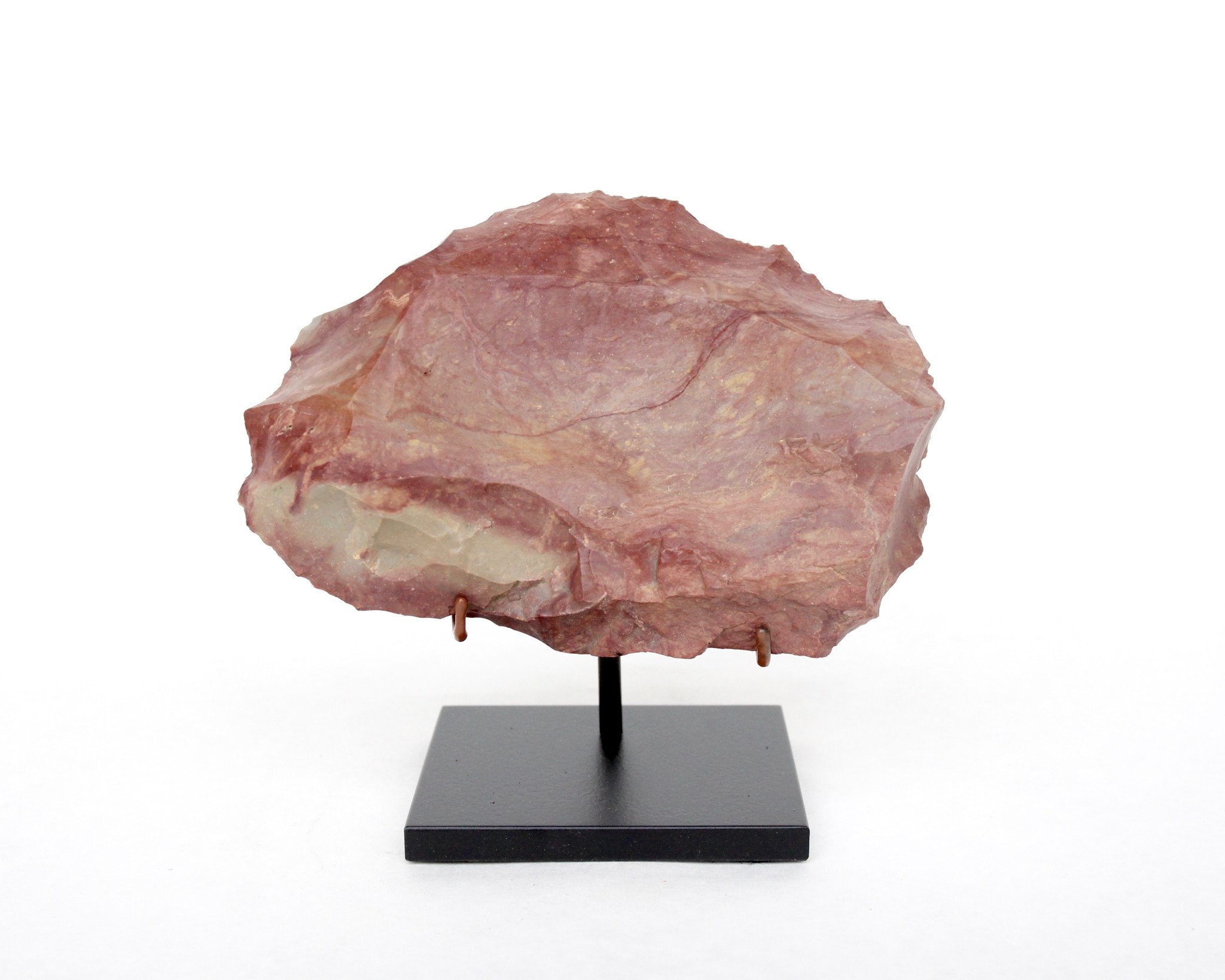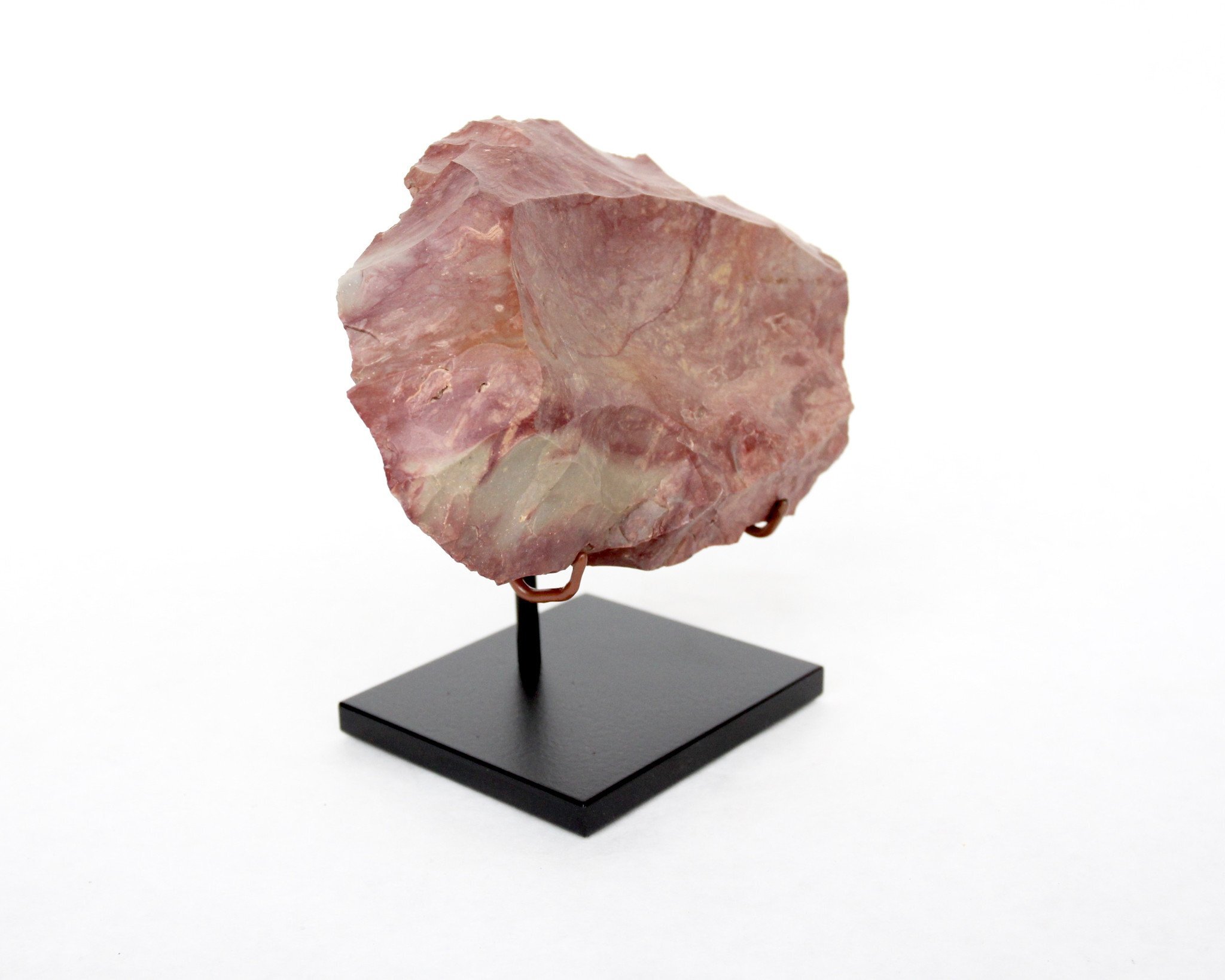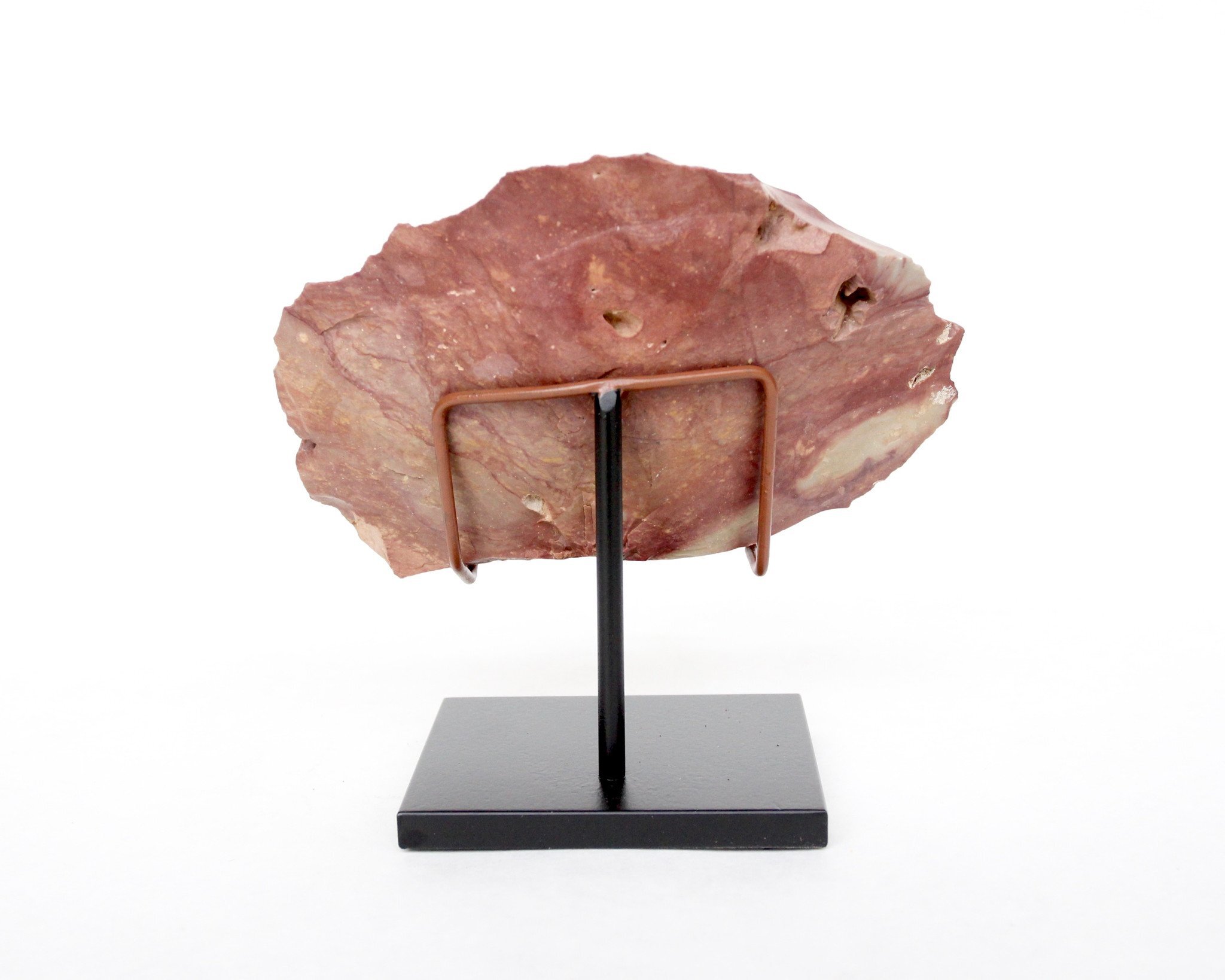Australian Aboriginal Red Handaxe
In 1963 a group of Pintubi people were found to be living in the Gibson Desert of Central Australia. They never had been in contact with Australian “civilization”, and had neither seen themselves in a mirror, been in contact with a motor vehicle, or ever seen a white face.
Douglas Lockwood tells the remarkable story of a coming in from the desert in the classic "The Lizard Eaters” of a tribe who were living as their Stone Age ancestors of thousands of years ago. The ability of Australian Aboriginals to survive and thrive for millennia in some of the harshest conditions on Earth perhaps provides lessons for our own time.
Here we have an Australian Aboriginal handaxe of flat form and reddish and pale grey color with an interesting concave working around the sharp outer edges. It is one of the most brilliant examples of stone handy work from Australia that we have seen.
On a custom museum stand.
7 in. / 18 cm. // 2 lbs. 6 oz. / 1.1 kg.
$850
In 1963 a group of Pintubi people were found to be living in the Gibson Desert of Central Australia. They never had been in contact with Australian “civilization”, and had neither seen themselves in a mirror, been in contact with a motor vehicle, or ever seen a white face.
Douglas Lockwood tells the remarkable story of a coming in from the desert in the classic "The Lizard Eaters” of a tribe who were living as their Stone Age ancestors of thousands of years ago. The ability of Australian Aboriginals to survive and thrive for millennia in some of the harshest conditions on Earth perhaps provides lessons for our own time.
Here we have an Australian Aboriginal handaxe of flat form and reddish and pale grey color with an interesting concave working around the sharp outer edges. It is one of the most brilliant examples of stone handy work from Australia that we have seen.
On a custom museum stand.
7 in. / 18 cm. // 2 lbs. 6 oz. / 1.1 kg.
$850
In 1963 a group of Pintubi people were found to be living in the Gibson Desert of Central Australia. They never had been in contact with Australian “civilization”, and had neither seen themselves in a mirror, been in contact with a motor vehicle, or ever seen a white face.
Douglas Lockwood tells the remarkable story of a coming in from the desert in the classic "The Lizard Eaters” of a tribe who were living as their Stone Age ancestors of thousands of years ago. The ability of Australian Aboriginals to survive and thrive for millennia in some of the harshest conditions on Earth perhaps provides lessons for our own time.
Here we have an Australian Aboriginal handaxe of flat form and reddish and pale grey color with an interesting concave working around the sharp outer edges. It is one of the most brilliant examples of stone handy work from Australia that we have seen.
On a custom museum stand.
7 in. / 18 cm. // 2 lbs. 6 oz. / 1.1 kg.
$850





